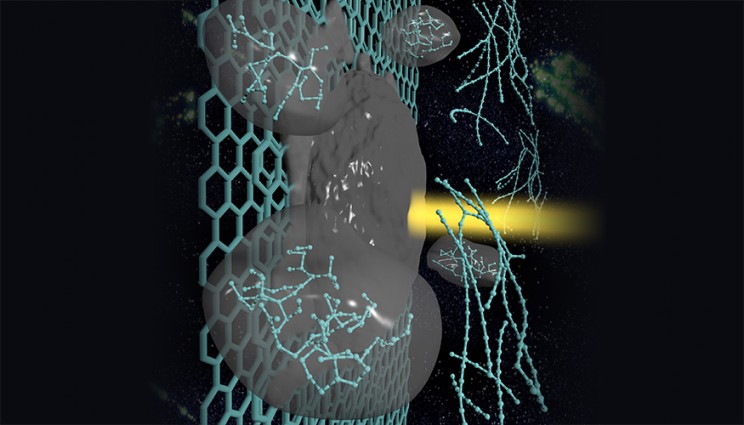You’d think science and technology might rate a mention in a debate focused on the economy but according to all accounts, that wasn’t the case last night in a Sept. 17, 2015 Canadian federal election debate featuring three party leaders, Justin Trudeau of the Liberal Party, Thomas Mulcair of the New Democratic Party (NDP), and Stephen Harper, Prime Minister and leader of the Conservative Party. BTW, Elizabeth May, leader of the Green Party, was not invited but managed to participate by tweeting video responses to the debate questions. For one of the more amusing and, in its way, insightful commentaries on the debate, there’s a Sept. 17, 2015 blog posting on CBC [Canadian Broadcasting Corporation] News titled: ‘Old stock Canadians,’ egg timer, creepy set top debate’s odd moments; Moderator David Walmsley’s Irish accent and a ringing bell get reaction on social media.
As for science and the 2015 Canadian federal election, Science Borealis has compiled an informal resource list in a Sept. 18, 2015 posting and while I’ve excerpted the resources where you can find suggested questions for candidates, there’s much more to be found there,
Interestingly, the journal Nature has published a Sept. 17, 2015 article (h/t @CBC Quirks) by Nicola Jones featuring the Canadian election and science concerns and the impact science concerns have had on opposition party platforms (Note: Links have been removed),
Canadians will head to the polls on 19 October [2015], in a federal election that many scientists hope will mark a turning point after years of declining research budgets and allegations of government censorship.
…
In an unprecedented move, the Professional Institute of the Public Service of Canada — a union in Ottawa that represents more than 57,000 government scientists and other professionals — is campaigning in a federal race. “Here’s how we do things in the Harper government,” declares one of the union’s radio advertisements. “We muzzle scientists, we cut research and we ignore anyone who doesn’t tell us what we want to hear.”
…
Science advocates see little chance that their issues will be aired during a 17 September [2015] debate in Calgary that will pit Harper against NDP [New Democratic Party] leader Thomas Mulcair and Liberal leader Justin Trudeau. But concerns about the state of Canadian science have nevertheless influenced party platforms.
The middle-left Liberal Party has made scientific integrity part of its election campaign, proposing the creation of a central public portal to disseminate government-funded research. The party seeks to appoint a chief science officer to ensure the free flow of information.
…
Similarly, the NDP has called for a parliamentary science officer, a position that would be independent of the majority party or coalition leading the government.
Adding to the concern about the practice of science in Canada is the delayed release of a biennial report from the government’s Science, Technology and Innovation Council (STIC). Paul Wells in a June 26, 2015 article for Maclean’s Magazine discusses the situation (Note: Links have been removed),
It is distressing when organizations with no partisan role play the sort of games partisans want. The latest example is the advisory board that the Harper government created to tell it how Canada is doing in science.
I have written about the Science, Technology and Innovation Council every two years since it produced its first major report, in May 2009. STIC, as it’s known, is not some fringe group of pinko malcontents trying to stir up trouble and turn the people against their right and proper governing party. It was conceived by the Harper government (in 2007), appointed by the Harper government (in bits ever since), and it consists, in part, of senior officials who work with the Harper government every day. …
…
This group gives the feds the best advice they can get about how Canada is faring against other countries in its science, research and technology efforts. Its reports have been increasingly discouraging.
…
Perhaps you wonder: What’s the situation now? Keep wondering. Every previous STIC biennial report was released in the spring. This winter, I met a STIC member, who told me the next report would come out in May 2015 and that it would continue most of the declining trend lines established by the first three reports. I wrote to the STIC to ascertain the status of the latest report. Here’s the answer I received:
“Thank you for your interest. STIC’s next State of the Nation report will be released later in the Fall. We will be happy to inform you of the precise date and release details when they have been confirmed.”
There is no reason this year’s report was not released in the spring, as every previous report was. None except the approach of a federal election.
Getting back to a national science debate, I have written about a proposed debate to be held on the CBC Quirks and Quarks radio programme here in a Sept. 3, 2015 posting which also features a local upcoming (on Weds., Sept. 23, 2015) election science and technology debate amongst federal candidates in Victoria, BC. I cannot find anything more current about the proposed national science debate other than the CBC radio producer’s claim that it would occur in early October. Earlier today (Sept. 18, 2015) I checked their Twitter feed (https://twitter.com/CBCQuirks) and their website (http://www.cbc.ca/radio/quirks). I wonder what’s taking so long for an announcement. In the space of a few hours, I managed to get Ted Hsu and Lynne Quarmby, science shadow ministers for the Liberal and Green parties, respectively, to express interest in participating.
Well, whether or not there is a 2015 national science debate, I find the level of interest, in contrast to the 2011 election, exciting and affirming.
In the midst of all this election and science discussion, there are some big Canadian science events on the horizon. First and technically speaking not on the horizon, there’s Beakerhead (a smashup of art, science, and engineering) in Calgary, Alberta which runs from Sept. 16 – 20, 2015. Here are a few of the exhibits and installations you can find should you get to Calgary in time (from a Sept. 16, 2015 Beakerhead news release),
The five days of Beakerhead officially get rolling today with the world’s largest pop-up gallery, called a String (Theory) of Incredible Encounters, with a circumference of five kilometres around downtown Calgary.
The series of public art installations is an exploration in creativity at the crossroads of art, science and engineering, and can be seen by touring Calgary’s neighbourhoods, from Inglewood to East Village to Victoria Park, 17th Ave and Kensington. The home base or hub for Beakerhead this year is at Station B (the Beakerhead moniker for installations at Fort Calgary).
Station B is home to two other massive firsts – a 30-foot high version of the arcade claw game, and a 6,400 square foot sandbox – all designed to inspire human ingenuity.
Beakerhead 2015 event will erupt on the streets and venues of Calgary from September 16 to 20, and includes more than 160 collaborators and 60 public events, ranging from theatre where the audience is dining as part of the show to installations where you walk through a human nose. More than 25,000 students will be engaged in Beakerhead through field trips, classroom visits and ingenuity challenges.
Just as Beakerhead ends, Canada’s 2015 Science Literacy Week opens Sept. 21 – 27, 2015. Here’s more about the week from a Sept. 18, 2015 article by Natalie Samson for University Affairs,
On Nov. 12 last year [2014], the European Space Agency landed a robot on a comet. It was a remarkable moment in the history of space exploration and scientific inquiry. The feat amounted to “trying to throw a dart and hit a fly 10 miles away,” said Jesse Hildebrand, a science educator and communicator. “The math and the physics behind that is mindboggling.”
Imagine Mr. Hildebrand’s disappointment then, as national news programs that night spent about half as much time reporting on the comet landing as they did covering Barack Obama’s gum-chewing faux pas in China. For Mr. Hildebrand, the incident perfectly illustrates why he founded Science Literacy Week, a Canada-wide public education campaign celebrating all things scientific.
From Sept. 21 to 27 [2015], several universities, libraries and museums will highlight the value of science in our contemporary world by hosting events and exhibits on topics ranging from the lifecycle of a honeybee to the science behind Hollywood films like Jurassic World and Contact.
Mr. Hildebrand began developing the campaign last year, shortly after graduating from the University of Toronto with a bachelor’s degree in ecology and evolutionary biology. He approached the U of T Libraries for support and “it really snowballed from there,” the 23-year-old said.
…
Though Mr. Hildebrand said Science Literacy Week wasn’t inspired by public criticism against the federal government’s approach to scientific research and communication, he admitted that it makes the campaign seem that much more important. “I’ve always wanted to shout from the rooftops how cool science is. This is my way of shouting from the rooftops,” he said.
In the lead-up to Science Literacy Week, museum scientists with the Alliance of Natural History Museums of Canada have been posting videos of what they do and why it’s important under the hashtag #canadalovesscience. The end of the campaign will coincide with a lunar eclipse and will see several universities and observatories hosting stargazing parties.
…
You can find out more about this year’s events on the Science Literacy Week website. Here are a few of the BC events I found particularly intriguing,
UBC Botanical Garden – Jointly run as part of National Forest Week/Organic Week
September 20th, 10 a.m-12 p.m – A Walk in the Woods
Come discover the forest above, below and in between on our guided forest tour! Explore and connect with trees that hold up our 300-metre long canopy walkway. [emphasis mine] Meet with grand Firs, Douglas Firs and Western Red Cedars and learn about the importance of forests to biodiversity, climate change and our lives.
September 24th, 7:30-11 P.M – Food Garden Tour and Outdoor Movie Night
What better way to celebrate Organic Week than to hear about our exciting plans for the UBC Food Garden? Tour renewed garden beds to see what’s been growing. Learn about rootstocks, cultivars, training techniques and tree forms for fruit trees in this area. Then make your way to out enchanting outdoor Ampitheatre and watch Symphony of the Soil, a film celebrated by the UN for 2015, the International Year of the Soil.
I highlighted the UBC Botanical Garden canopy walkway because you really do walk high up in the forest as you can see in this image of the walkway,
![[downloaded from http://www.familyfuncanada.com/vancouver/canopy-walk-ubc-botanical-garden/]](http://www.frogheart.ca/wp-content/uploads/2015/09/UBCCanopyWalkway.jpg)
[downloaded from http://www.familyfuncanada.com/vancouver/canopy-walk-ubc-botanical-garden/]
This image is from an undated article by Lindsay Follett for Family Fun Vancouver.
While it’s still a month away, there is Canada’s upcoming 2015 National Science and Technology Week, which will run from Oct. 16 – 25. To date, they do not have any events listed for this year’s week but they do invite you to submit your planned event for inclusion in their 2015 event map and list of events.


![[downloaded from http://www.familyfuncanada.com/vancouver/canopy-walk-ubc-botanical-garden/]](http://www.frogheart.ca/wp-content/uploads/2015/09/UBCCanopyWalkway.jpg)